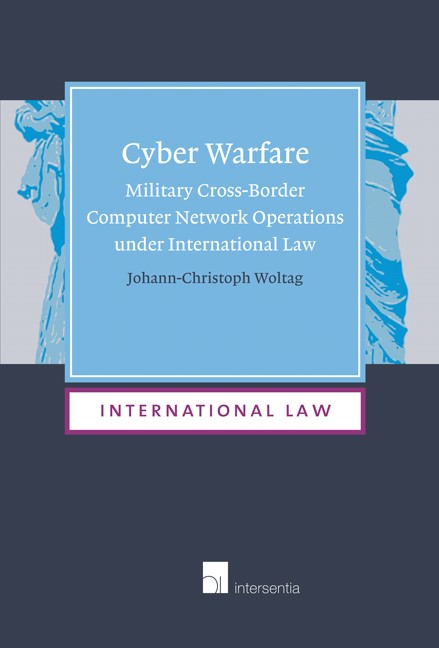Book contents
- Frontmatter
- Dedication
- Acknowledgements
- Contents
- Abbreviations
- Introduction
- PART I THE INTERNET AS A UNIVERSAL YET TERRITORIALISED INFRASTRUCTURE
- Chapter 1 A Survey of Computer Network Operations
- Chapter 2 The Legal Regime of Cyberspace
- PART II THE LEGAL QUALIFICATION OF COMPUTER NETWORK OPERATIONS
- PART III CONCLUSION
- Bibliography
Chapter 1 - A Survey of Computer Network Operations
from PART I - THE INTERNET AS A UNIVERSAL YET TERRITORIALISED INFRASTRUCTURE
Published online by Cambridge University Press: 28 November 2017
- Frontmatter
- Dedication
- Acknowledgements
- Contents
- Abbreviations
- Introduction
- PART I THE INTERNET AS A UNIVERSAL YET TERRITORIALISED INFRASTRUCTURE
- Chapter 1 A Survey of Computer Network Operations
- Chapter 2 The Legal Regime of Cyberspace
- PART II THE LEGAL QUALIFICATION OF COMPUTER NETWORK OPERATIONS
- PART III CONCLUSION
- Bibliography
Summary
THE MEDIUM OF COMPUTER NETWORK OPERATIONS: THE INTERNET
According to the premise that any application of law requires the knowledge of the circumstances of the case, a short introduction into the technical fundamentals both of the Internet and the methods of computer network operations is necessary as a first step in order to understand the legal challenges connected therewith.
As a second step the relevance of the Internet for post-industrial societies, the State and its armed forces will be identified in order to illustrate the possible objectives of military computer network operations.
THE INTERNET AS A NETWORK OF NETWORKS: TECHNICAL FUNDAMENTALS
While there exist numerous definitions of the term ‘Internet’, in the following reference shall be made to a definition stemming from the United States Code which describes it as:
‘the myriad of computer and telecommunications facilities, including equipment and operating soft ware, which comprise the interconnected world-wide network of networks that employ the Transmission Control Protocol/Internet Protocol, or any predecessor or successor protocols to such protocol, to communicate information of all kinds by wire or radio.’
From this definition becomes apparent one of the fundamental characteristics of the Internet, namely that it is not a physically genuine data network, but an overarching concept of a loose network, the construction of which is based on decentralisation and interconnectedness of smaller networks and singular host and server computer systems. A unified network architecture with generally accepted protocols enables the individual systems to communicate with each other. This communication is achieved by sending messages over the communication links, thereby using a standard network operating protocol suite – the most important protocols thereof being the Transmission Control Protocol and the Internet Protocol, or TCP/IP – which specifies the data formats and rules of transmission.
The Internet is a so-called packet-switched network, meaning that data to be transmitted via the Internet will be split into several packets – inter alia depending on the size of the data – which contain the actual data to be sent, the destination and source address and other information that supports its reliable transmission.
- Type
- Chapter
- Information
- Cyber WarfareMilitary Cross-Border Computer Network Operations under International Law, pp. 9 - 52Publisher: IntersentiaPrint publication year: 2014

